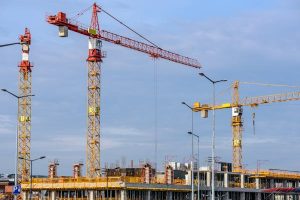3 Dynamics of Civil Engineering Industry in London
Table of Contents
Civil Engineering Industry in London

Civil engineering industry in London, which is highly paid jobs in the city as well as good in professional sectors among all the other industries in the city. Impacts of civil engineering showcase and expose iconic landmarks that stand as symbols of human achievement. Behind these architectural marvelous creations and the designs made by the civil engineers, like a dynamic and multifaceted industry that plays a most important role in shaping the city’s infrastructure. In this article, we explore into the trends and how engineers face issues and their talents in London’s civil engineering sector, exploring the latest trends, persistent challenges, and innovative solutions that are moving the industry forward.
Exploring the Main things about the civil engineering industry in London
1. Trends in London’s Civil Engineering Industry:

Industry Development: With increasing main concerns about environmental impact and climate change, sustainable practices have become a cornerstone of civil engineering in London. From green infrastructure projects to energy-efficient building designs, the industry is developing by all the sub sectors like other activities regarding the designs plans, education courses provided by certain company and hiring well skilled candidates and more sustainability as a guiding principle.
Digital Transformation: The advantages of technologies such as Building Information Modeling (BIM) and virtual reality has revolutionized the way civil engineering projects are designed, executed, and managed. Now a days most of the peoples asks about the plans with computer graphics before starting the projects because the client’s needs the exact designs, and the perfects plans before starting the work. Digital tools streamline processes, enhance collaboration, and improve project outcomes. So, this will give the outcomes of the certain projects before the works starts.
Infrastructure: London’s rapidly growing population and aging infrastructure present challenges in ensuring the resilience and reliability of critical assets. Civil engineers are focusing on enhancing and introducing more infrastructure plans and designs for resilience to withstand natural disasters, climate-related events, and urbanization pressures.
2. Challenges Facing the Industry:

Urbanization Pressures: London’s status as a global metropolis brings with it the challenges of rapid urbanization, including increased demand for housing, transportation, and utilities. Balancing development with environmental conservation and social equity is a complex task for civil engineers. And also, some of the urban areas are against about some of the projects because of maybe once the projects comes it maybe affects the people’s well-being sometimes.
Funding and Financing: The financing of large type of infrastructure projects remains a significant obstacle, with budget constraints and competing priorities often delaying or limiting the implementation of essential initiatives. Public-private partnerships and innovative funding models are being explored to address this challenge. And the client’s satisfaction is also important because they release the funds for starting the works, so the engineers have more concentrate on this and not done any errors or wasting the money.
Regulatory Compliance: London’s strategies for regulatory framework, encompassing planning regulations, environmental standards, and safety requirements, adds layers of complexity to civil engineering projects. It all comes under the regulatory things, must follow the regulatory to avoid the future issues. Navigating regulatory hurdles while ensuring project success requires expertise and meticulous planning.
3. Innovations Driving Change:

Modular Construction: The adoption of modular construction techniques is gaining more process in London, offering benefits such as reduced construction time, cost savings, and improved quality control methods and more. Modular approaches are particularly well-suited for urban environments with space constructions or more spaces building areas.
Smart Infrastructure: The integration of sensors, data analytics, and Internet of Things, and virtual reality techniques and more software technology is transforming London’s infrastructure into smart systems capable of real-time monitoring, predictive maintenance, and optimized performance. The infrastructure is not only for the outside of the innovation or certain building or any firms, but it also used for the interior works and the interior design works for complete good works after finished.
Circular Economy Principles: Here embracing the main principles of the circular economy, civil engineers are exploring and sometimes done research about the innovative approaches to waste reduction, resource efficiency, and sustainable materials usage in construction projects. This shift towards circularity aligns with London’s commitment to a greener, more resilient in future. This kind of additional involvement will lead to do a great work of construction and the trust worth for the future works by the civil engineers in London.




